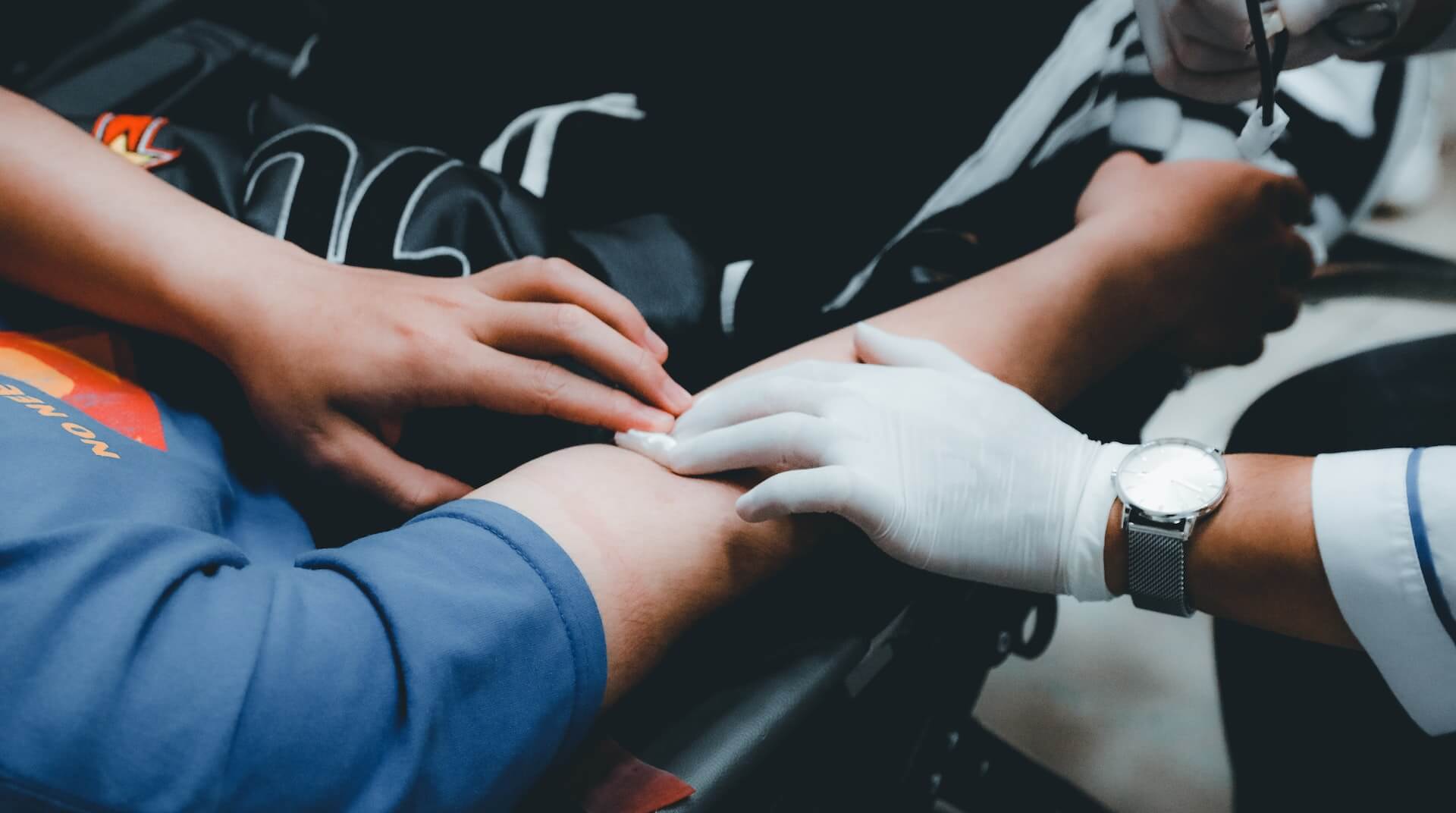Donate Plasma for Money [Save Lives & Get Paid!]

I remember donating plasma (aka plassing) for money and making a decent amount of cash. The nurse was friendly and explained the process, asking about my health and travel history. I felt lightheaded during the donation process but was determined to make that cash.
The nurse was surprised to see my plasma come out in dollar bills, and we laughed. Just kidding, of course.
Seriously, here’s the deal about donating plasma for money. Not only can you make up to $50 per donation, but you’ll also be helping to save lives and make a positive impact on others.
Before you decide to donate, there are a few important things you should know. Read below to learn more about the process and how donating plasma can benefit you.
Table of Contents
What Exactly is Plasma?
Plasma, aka liquid gold, is a miraculous yellow fluid that aids with clotting and carries essential nutrients to every nook of your body. It’s used in medical remedies from minor scratches to life-threatening conditions, which are sourced through an advanced process named plasmapheresis.
Plasmapheresis is the process of filtering the blood, and separating the plasma from the antibodies. You are hooked up to an IV, and blood is removed from your body, separated from the plasma (which is collected in a large, sterile bottle), and blood is returned to you. This is all done in 3-5 different rotations (so you’re not drained all at once).
Effectively, it takes out the plasma from one person’s blood sample and filters them for safe usage before eventually returning the red and white cells back into their bloodstream.
Who Can Donate Plasma?
Anyone over the age of 18 (or 21 in certain states) with good health can donate plasma. In order to confirm their identity, all donors must provide sufficient proof and then go through a physical exam along with necessary blood tests.
Usually, there is a weight minimum as well…110 lbs.
What is it Like to Donate Plasma?
Donating plasma is a super fast and easy process, taking only about an hour on average. It’s pretty simple – usually just four steps:
- First, check-in and show your ID when you get to the plasma donation center. They might also ask you to fill out some paperwork, like a questionnaire about your health and travel history.
- A healthcare worker will give you a physical and check your vitals, like your blood pressure and pulse. They might also draw some blood to test for diseases. For repeat visits, you’ll answer a series of questions on a computer monitor, endure a tiny finger prick and blood pressure and weight check, and if you pass, you’ll be eligible to donate again.
- To donate plasma, you’ll sit in a chair and a nurse will stick a needle in your arm. The machine will take out your plasma and separate it from your red blood cells and white blood cells. The red and white blood cells go back into your body through the same needle, and the plasma goes in a bag. It only takes about 45 minutes to an hour.
- After you’re done, take a break and have some snacks before you leave.
Is it Painful to Donate?
Hey, no worries! Donating plasma isn’t painful. You might feel a slight sting when they stick the needle in, but it doesn’t last long. It’s over before you know it.
After that, you’ll just sit there for about 45 minutes to an hour while the machine does its thing. It’s not a big deal at all.
How Much Plasma Can You Donate and How Often?
It is possible to donate up to a pint of your plasma every few days – depending on how quickly your body can recover.
See also: How to Donate Your Body to Science, and Save Money on Your Funeral
Best Places to Donate Plasma for Money
There are many plasma donation centers. They are special places where you can give plasma. You can find one near you by searching online or at hospitals and blood banks. Or, check the websites mentioned below.
Some blood banks also collect plasma and might pay you for your time and effort. Finally, clinical research organizations might do studies with plasma and might pay you to participate.
CSL Plasma Donation Centers
One of the most common places to donate plasma for money is at CSL Plasma They are promoting a $100 first-time donation and up to $500 a month from donating.
Octaplasma
Another place to donate plasma is Octapharma. They have some upfront bonuses as well, and tout being able to make as much as $800 for your efforts. My friend Melissa shares her experience donating plasma with Octapharma Plasma here.
Parachute
A new app organizes the process of making money from plasma donations. It’s called Parachute. They are currently only available in a few cities, but you should at least download the app and see if they are in your area. If they aren’t now, they will be soon.
Parachute is currently paying $130 total for your first two donations of plasma. And the app has incentives to earn more through challenges and timely donations. Looks super interesting.
Other Plasma Donation Centers include: BioLife Plasma and Interstate Blood Bank.
Benefits of Donating Plasma
Donating plasma can be super helpful in a lot of ways. First and foremost, as we already mentioned, it’s a chance for you to make some extra cash while doing some good in the world.
Plasma donations can save lives, so by giving yours, you’ll be part of something bigger than yourself! Plus, if there’s a plasma donation center near where you live or work, you can get involved in your local community. It’s a win-win!
Here’s Dr. Rachel Beddard, Medical Director of the Scottish National Blood Transfusion Service, about the importance of plasma donation:
“Plasma is a vital component of blood that helps to save and improve the lives of people with serious medical conditions. It is used to treat a wide range of medical conditions, including bleeding disorders, immune deficiencies, and burns. Plasma donation is a simple and safe process that can hugely impact the lives of those in need. By donating plasma, you can help to ensure that lifesaving treatments are available to those who need them.”
Potential Risks of Donating Plasma
Before you donate plasma, there are a few potential risks to consider. You might feel lightheaded or dizzy because of low iron levels during or after the procedure. You might also feel weak after donating.
And if the needles and other equipment aren’t clean, you might get an infection where they stick the needle in.
Make sure to weigh the risks against the rewards before donating. It’s also essential that the plasma donation center follows the rules for getting rid of stuff safely. This will make sure that no one gets sick from contamination.
Side note…You can’t donate whole blood and blood plasma at the same time. If you’ve donated whole blood recently, you’ll be deferred from donating blood plasma for eight weeks from the date of your last blood draw.
Related: Get Paid to Donate Bone Marrow for Transplants?
How Much Do You Get Paid to Donate Blood Plasma?
You might get paid up to $50 per donation! If you donate a bunch of times, the money starts to add up. As mentioned above, some places even give you first-time bonuses, and some provide you with gift certificates for local stuff instead of just money.
It’s an easy way to make some extra dough without taking up too much of your time.
Is that Worth It?
It’s up to you to decide whether it’s worth it. I’d say if you live right next to the donation center and you don’t mind the process, it’s probably worth it. Since you can donate a couple of times a week, it would pay for a few lunches out during the week, or a nice meal out with your family.
Easiest money I have ever made. Donating plasma right now.
$975 for 8 donations (each donation takes 40 minutes)
Hell of a time to make money
— Austin ? (@1thebusinesskid) September 12, 2022
Do You Get Paid More if You’re Unvaccinated?
The jury is still out on this one, I’m afraid.
If I were getting someone else’s plasma as part of a medical procedure I would definitely want plasma from an unvaccinated donor if given the choice. Many people are asking “is unvaccinated plasma worth more” because of this potential increase in demand.
Well, there’s no evidence that plasma centers are charging more for plasma from unvaccinated donors. Nor is there evidence that they are designating their plasma collections as vaccinated vs unvaccinated.
Given these factors, I think it’s safe to say that a donation center isn’t going to pay you more if you’re unvaccinated. Let’s wait and see about this and not rush to any conclusion. As with everything related to this issue, it seems information is constantly changing.
Update: A Swedish organization called SafeBlood Donation has created a membership for the unvaccinated to organize blood and plasma donations. According to their FAQs page, there doesn’t appear to be a payment established yet for donors. There is, however, a $50 fee to be included in the membership for the first year.
Is it Reported to the IRS?
Ask the plasma center/bank where you made the donation what they do with the information regarding rewards or cash paid out. They may or may not report it to the IRS. Regardless, your plasma donation earnings are earned income and should be reported by you to the IRS.
In summary, if you’re looking to make some extra money while doing something good, donating plasma might be a great option for you! Just make sure you know what’s involved and that you meet all the requirements. And don’t be afraid to ask about different payment options – it could help you make even more cash.
What about you? Have you ever donated plasma for cash? Was it worth it?






